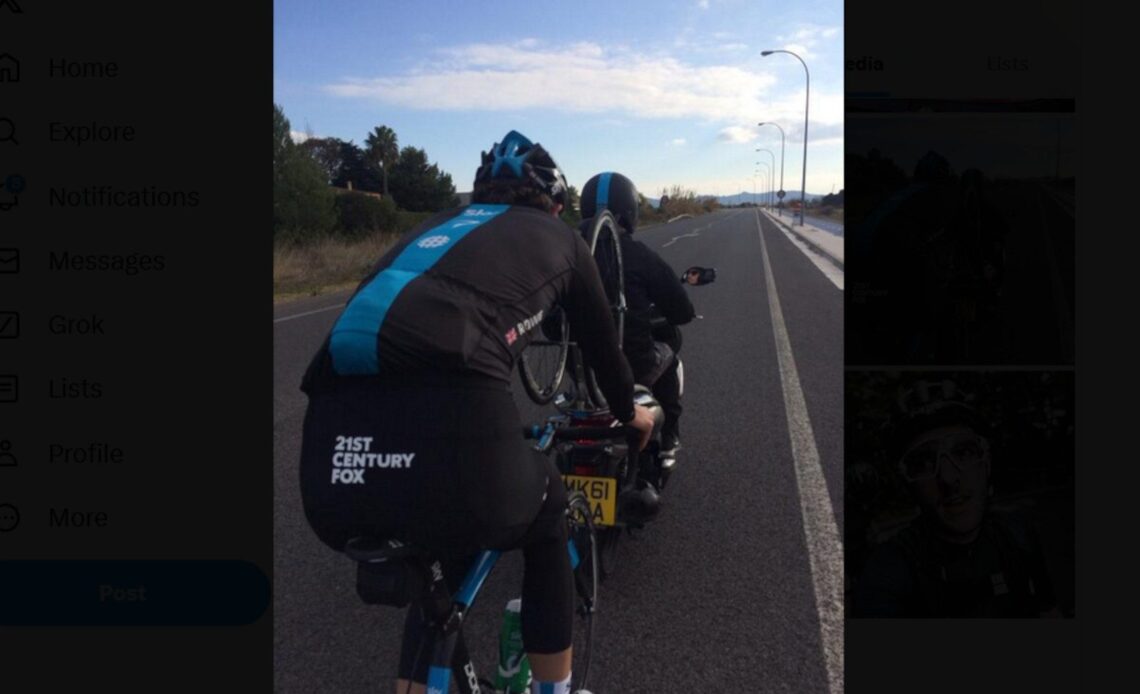Motorpacing, a practice where cyclists follow closely behind a motorized vehicle, has been a common training method among pros for years. And there’s a good reason: it offers numerous benefits.
Simulating race pace
One of the primary reasons professional cyclists motorpace is to simulate race conditions and improve their speed and endurance. By drafting behind a car, motorcycle or scooter travelling at high speeds, cyclists experience similar aerodynamic conditions to those encountered during a race. This allows them to train at intensities that are difficult to achieve on their own, thereby pushing their physical limits and improving their overall performance.
Bike handling
It can also help pros to refine their bike handling skills and develop a better sense of pace. Riding in close proximity to a moto requires precise control and concentration, forcing cyclists to stay alert and make split-second decisions.
You need an engine to drop Pogačar 🛵🔥
UAE Team Emirates use motorpacing to prepare their riders for the high speeds of the peloton 🚀 pic.twitter.com/lcxovBtKQS
— Road Code (@RoadCode) October 31, 2023
Refining pedal stroke
Another significant advantage of motorpacing is its ability to improve neuromuscular coordination and pedaling efficiency. Riding behind a vehicle means you need to maintain a consistent, higher cadence and pedal stroke, which will help develop a smoother and more efficient pedaling technique at race pace. You’ve probably noticed how it feels different to go off and do intervals on your own, versus what it’s like in a pack at high speed. You may sit differently solo versus in a group, and you will use slightly different muscles in your legs. Motorpacing will help simulate those high speeds you can’t reach on your own. Or they may even do the entire ride behind one at race pace.
A variety of workouts behind a motor
Furthermore, motorpacing allows cyclists to target specific training objectives and tailor their workouts to meet their individual needs. By adjusting the speed and duration of the pacer , pros can vary the intensity of their training sessions and focus on developing different aspects of their performance. You can simulate the end of a race, and coming off of a leadout, for example. The moto will pull off and you can do a short sprint. Or you can simulate coming into a climb, then doing a hill interval. Additionally, it’s commong for…
Click Here to Read the Full Original Article at Canadian Cycling Magazine…

